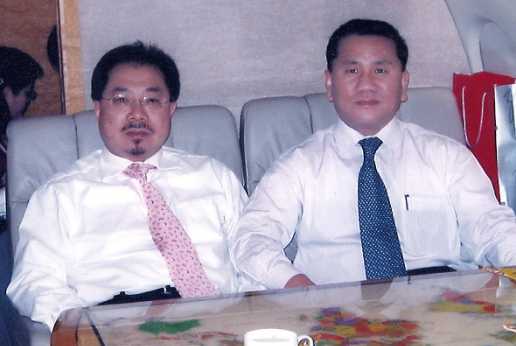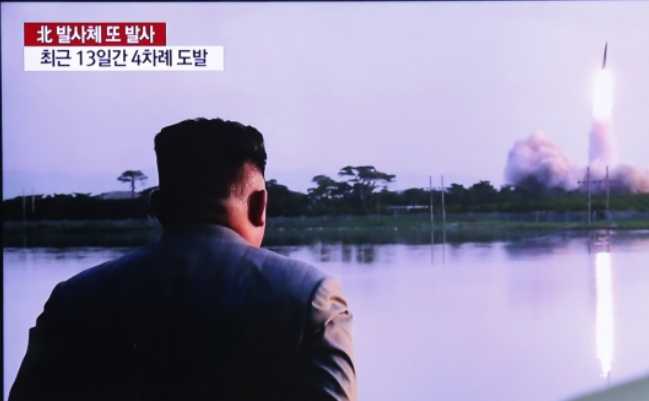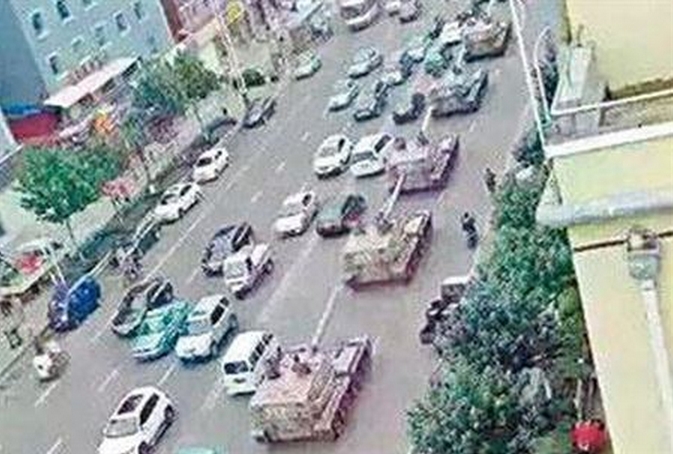ONBOARD A MILITARY AIRCRAFT — The United States and South Korea are preparing to develop “a new, operational war plan” to better address the growing threat from North Korea’s military.
The new plan would replace existing strategies meant to respond to potential North Korean aggressions which were drawn up about a decade ago and do not account for Pyongyang’s military advances, according to senior U.S. defense officials who spoke on condition of anonymity in order discuss the process.
“This is the right thing to do,” a senior defense official told reporters en route to Seoul for meetings between U.S. Defense Secretary Lloyd Austin and South Korean officials.
“The DPRK has advanced its capabilities,” the official said. “The strategic environment has changed over the past few years.”
The official described the process of updating the existing plans as an “extensive and intensive effort” with no set deadline for completion.
U.S. defense officials have been tracking a series of weapons tests by Pyongyang since September, including tests of a cruise missile, a short-range ballistic missile, a submarine launched ballistic missile, and what North Korea claims was a test of a hypersonic glide vehicle.
But a second senior official cautioned that the changes are not only the result of ongoing North Korean provocation but “a natural evolution to changing circumstances.”
“The ROK’s [South Korea’s] advanced capability development as well, and their ability to contribute to the plan is an important part of the update, as well,” the second official said.
An official announcement of work on the new war plan is just one of several efforts Austin and South Korean Defense Minister Suh Wook are expected to tout following their meeting as part of the 53rd U.S.-Republic of Korea Security Consultative Meeting (SCM).
U.S. officials also say the two countries hope to make progress on plans to eventually transfer command of U.S. and South Korean forces on the Korean Peninsula to South Korea, something they described as a significant milestone.[content id=”79272″]
China
Austin is also hoping the talks will see Seoul take a larger role in providing security and stability for the entire region, despite concerns by South Korea that doing so could exacerbate tensions with China.
U.S. defense officials emphasized that Seoul is “particularly well-positioned” to play a positive role.
“We see it [South Korea] now as a net provider of security not just on the peninsula but across the region,” the first senior defense official said, adding the two countries will be “looking at ways where we can coordinate our defense cooperation in the region, and specifically capacity building throughout the region.”
Taiwan
As for what that means for Taiwan, and what U.S. officials have described as Beijing’s increasingly aggressive behavior, the official said only, “peace and stability across the Taiwan Strait is in the interest of the whole region.”
The talks between the U.S. and South Korea come just days after the Pentagon finished its 2021 Global Posture Review, which examined how U.S. forces are positioned across the world.
The review remains classified, but a Pentagon statement Monday said the review “directs additional cooperation with allies and partners to advance initiatives that contribute to regional stability and deter potential Chinese military aggression and threats from North Korea.”
Initiatives include enhancing military infrastructure in Australia and the Pacific Islands.
Officials said the review also informed the U.S. decision earlier this year to permanently station an attack helicopter squadron and an artillery division headquarters in South Korea.
[content id=”52927″][content id=”79272″]





